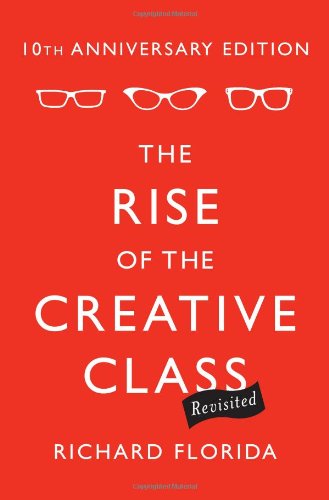

Most ebook files are in PDF format, so you can easily read them using various software such as Foxit Reader or directly on the Google Chrome browser.
Some ebook files are released by publishers in other formats such as .awz, .mobi, .epub, .fb2, etc. You may need to install specific software to read these formats on mobile/PC, such as Calibre.
Please read the tutorial at this link. https://ebooknice.com/page/post?id=faq
We offer FREE conversion to the popular formats you request; however, this may take some time. Therefore, right after payment, please email us, and we will try to provide the service as quickly as possible.
For some exceptional file formats or broken links (if any), please refrain from opening any disputes. Instead, email us first, and we will try to assist within a maximum of 6 hours.
EbookNice Team

Status:
Available4.4
27 reviewsTen years ago, Richard Florida published a path-breaking book about the forces that were reshaping our economy, our geography, our work, and our whole way of life. Weaving story-telling with reams of original research, he traced a fundamental theme through a host of seemingly unrelated changes in American society: the growing role of creativity. In the decade since, we have endured a series of world shattering events—from the collapse of the tech bubble to 9/11 to the economic meltdown of 2008—any one of which might have been sufficient to derail the forces he described Instead, the drive towards creativity as only intensified, both in the US and across the globe. In late 2011, the social media site LinkedIn reported that the word most used by its members to describe themselves was “Creative.” In this newly revised and expanded edition of his now classic book, Florida has brought all of its statistics up to date (and provided a host of new ones); further refined his occupational, demographic, psychological, and economic profile of the Creative Class; incorporated a decade’s worth of his own and his colleagues’ quantitative and qualitative research; and addressed his major critics. Five completely new chapters cover the global effects of the Creative Class and explore the integral features and factors that shape “quality of place” in our rapidly changing cities and suburbs. Florida delves into the roles played by technology, race, and poverty in perpetuating and exacerbating income inequality and the pervasive influence of class throughout every aspect of society. Throwing down the gauntlet, he proposes a dramatic new social compact for our time—one that can turn our emerging Creative Economy into an enduringly Creative Society. We currently inhabit a strange period of interregnum in which the old order has collapsed and the new order is not yet born, Florida writes. The old order has failed; attempts to bail it out, to breathe new life into it or to somehow prop it back up are doomed to history’s dustbin. The key is not to limit or reverse the gains that the Creative Class has made but to extend them across the board, to build a more open, more diverse, more inclusive Creative Society that can more fully harness its members’—all of its members’—capacities.